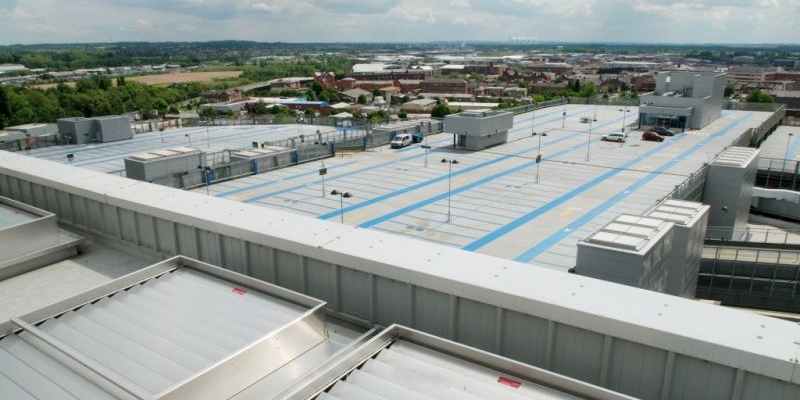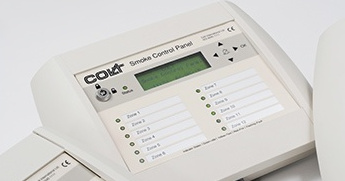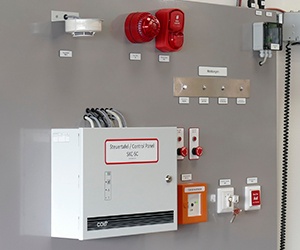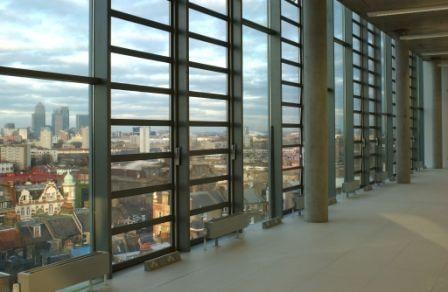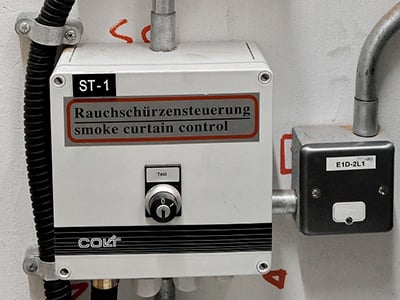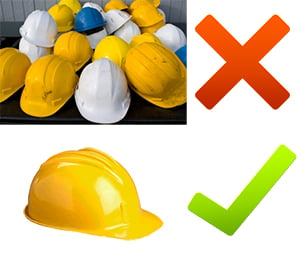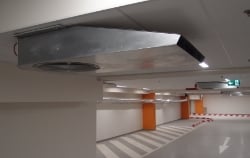Many residential and commercial buildings feature atria as a design feature to create a light well or to incorporate lifts or stairs into the design in a visually aesthetic way. However, they also provide a passage whereby smoke and fumes resulting from a fire could easily spread up through the entire building and affect multiple floors. Therefore, having effective smoke control and suppression systems in place in buildings with atria is essential.
Read More
Topics:
Smoke Control,
Smoke ventilation,
HVAC,
Controls
In retail premises such as shopping centres, the Building Regulations have a strong emphasis on the provision of life safety systems such as smoke control.
A well-designed smoke control system should be able to maintain smoke free escape conditions at low level to allow the building to be evacuated with minimum risk of smoke inhalation, injury or death.
Read More
Topics:
Smoke Control,
Smoke ventilation,
HVAC,
Controls
While smoke control is vital in any type of public building where people gather, it is perhaps even more so in schools and other buildings the more vulnerable members of society assemble. In this blog, we will cover the regulations around smoke control requirements in educational buildings and share some design considerations that are vital when configuring fire safety systems for buildings with children as the main users.
Read More
Topics:
Smoke Control,
Smoke ventilation,
HVAC,
Controls
Smoke ventilation systems today require sophisticated control systems with highly complex sequences of operation. HVAC control systems could be seen as a viable solution, as they can be extremely flexible and offer a high degree of programmability. However, while they may be adequate for simple applications, there are a number of issues that mean they do not deliver on all the functionalities needed for more complex schemes.
Here are 7 reasons why:
Read More
Topics:
Smoke Control,
Smoke ventilation,
HVAC,
Controls
The upsurge in large-scale residential schemes and commercial towers with fire fighting shafts has created the need for much more sophisticated control systems with highly complex sequences of operation for their smoke ventilation schemes.
Read More
Topics:
Smoke Control,
Smoke ventilation,
Controls
Smoke ventilation systems today require sophisticated control systems with highly complex sequences of operation. HVAC control systems could be seen as a viable solution, as they can be extremely flexible and offer a high degree of programmability. However, while they may be adequate for simple applications, there are a number of issues that mean they do not deliver on all the functionalities needed for more complex schemes.
Here are 5 reasons why:
Read More
Topics:
Smoke Control,
Smoke ventilation,
HVAC,
Controls
As a property owner or developer, when you have to make a decision on the best control system for smoke ventilation in your building, you are faced with a bewildering amount of information and conflicting opinions as to the most effective approach. Should you opt for a fire alarm control system, an HVAC/BMS control system or one specifically designed for smoke ventilation? Should you choose open or closed protocol?
Read More
Topics:
Smoke Control,
Smoke ventilation,
Controls
Smoke and fire curtains are usually controlled (either individually or in groups) by a zone control panel. The curtains are allowed to fall automatically under the influence of gravity when the power is lost, which can happen in a fire or during a simple power cut. However if there is an electricity outage where there is no emergency, this can be a nuisance, and it can be prevented by using either a local Uninterruptible Power Supply (UPS) or a Battery Back-Up (BBU).
Read More
Topics:
Smoke Control,
Fire Containment,
Controls,
Curtains
Following our recent article on the “Top three considerations when specifying glass louvred ventilators” we have been inundated with questions about modulating controls. Clearly this is a topic that resonates with many in the industry, and in this article we aim to provide some guidance on how to modulate louvred window ventilators.
Read More
Topics:
Natural ventilation,
Smoke ventilation,
Controls,
Louvre
Part 3 - Opening up the Closed Protocol Debate
Control systems for smoke ventilation need to meet the demand for increasing complexity of modern building complexes, such as large-scale residential schemes or high-rise tower buildings. As a property owner or developer, when making your choice of a fire alarm control system for your building, you will have to decide between an HVAC/BMS control system or one specifically designed for smoke ventilation, and between open or closed protocol.
As you make your considerations, it is important to keep in mind the key requirements your control system has to meet.
Read More
Topics:
Smoke Control,
Smoke ventilation,
Controls
Part 2 - Why are there more complex demands these days?
The debate about the relative merits of open and closed control protocols is relatively recent. It has arisen because of the evolution of the smoke ventilation market towards more complex systems.
Read More
Topics:
Smoke Control,
Smoke ventilation,
Controls
Part 1 - Selecting the right solution to control smoke ventilation systems
As a property owner or developer, when you have to select the best solution to control your building’s smoke ventilation system, you will most likely encounter the debate about the pros and cons of open and closed control protocols. This is the first in a series of articles that I hope will help you navigate the bewildering amount of information that is available on the subject.
I will start with the basics: what is a protocol and what does it mean when we say it is open or closed.
Read More
Topics:
Smoke Control,
Smoke ventilation,
Controls
Following on from our previous blog covering specifying fire curtains, we now turn to automatic controls for smoke and fire curtains.
Again we’ve been seeing lots of long-winded specifications calling for quite sophisticated control functions and features, mentioning potentially confusing features such as ‘epicyclic gearbox retarders’ which seem to be very specific to certain manufacturers rather than being an application or project requirement. These kinds of specifications may well be over complicating matters and potentially could build in reliability issues as well as increasing capital and maintenance costs unnecessarily.
Read More
Topics:
Fire Containment,
Smoke Containment,
Controls,
Curtains
Over the past couple of years it has become increasingly common for smoke and natural ventilation systems to be separated into different sub-contractor packages. For example, extract ventilators supplied by the roofing contractor, inlet vents by the glazing/cladding contractor, and wiring/controls by the M&E contractor.
In theory this makes sense because it may seem easier to procure the system in local packages. In practice it often doesn’t work.
Read More
Topics:
Natural ventilation,
Smoke ventilation,
Controls,
Wiring
The debate: what is it all about?
Over the last few years there has been a lot of discussion about use of inverter control for smoke extract fans. This has centred on concerns that the changing characteristics of the fan motor as it heats up may cause inverter failure. Inverter manufacturers do offer models with an “emergency mode”, where the majority of protections are disabled with the intention of allowing the motor to run to destruction.
Read More
Topics:
Smoke Control,
Smoke Containment,
Regulations,
Controls,
Car Park Ventilation


